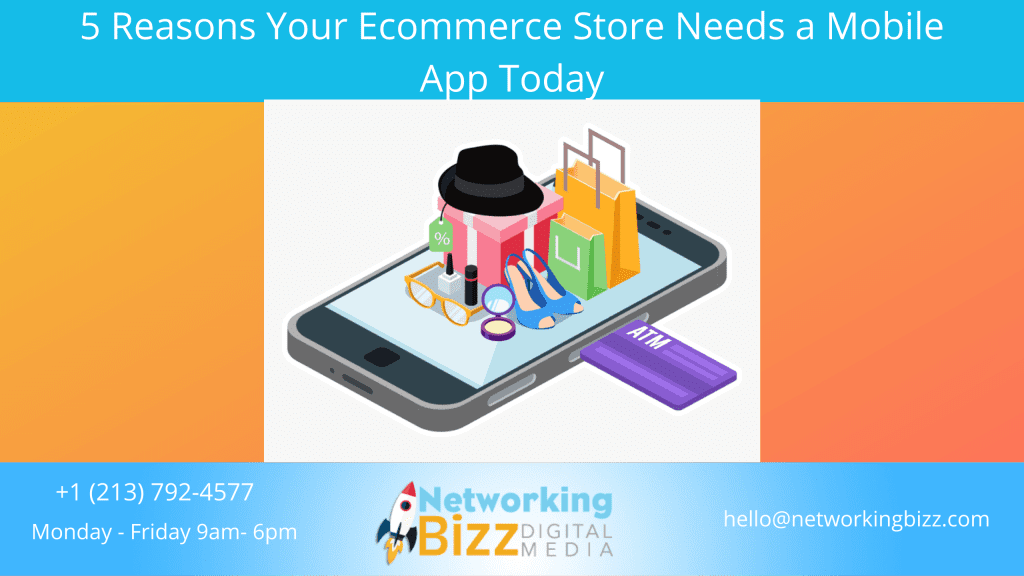
Ecommerce websites and mobile commerce, or m-commerce, options aren’t an either/or situation. Both play different roles in the customer journey and cater to different audiences. What is essential is that you don’t overlook mobile experiences while designing the eCommerce strategy for your business.
According to Pew Research, 8 out of 10 Americans are online shoppers, and 51 per cent of them use mobile devices for shopping. If you aren’t leveraging mobile traffic, your business is likely missing out vital conversions even as you are reading this.
While a responsive website is an excellent starting point in your m-commerce journey, having a mobile app has distinct advantages over mobile websites. Here is a list of compelling reasons why your eCommerce business needs to go for mobile app development in addition to having a mobile-responsive website.
1. Ease of use and better user experience
 Even if you have a responsive website, every time the user logs onto it, the browser would prompt the user to sign into the account to continue with the shopping. In the case of mobile apps, the user details are stored in the app and the users only have to sign in once, when they download the app.
Even if you have a responsive website, every time the user logs onto it, the browser would prompt the user to sign into the account to continue with the shopping. In the case of mobile apps, the user details are stored in the app and the users only have to sign in once, when they download the app.
Since the users don’t need to sign in every time they shop, the ease of use is higher and the resultant user satisfaction is also high. Mobile applications also allow the users to switch between the different tabs, making navigation and overall user experience simpler as compared to that of the website.
2. Access to phone-native features
 The phone’s native capabilities can be leveraged using mobile apps, which isn’t a possibility in the case of mobile websites. The integration of built-in smartphone components like GPS and cameras provides the user with enhanced user experience. Interactive shopping using augmented and virtual reality is an app-only feature.
The phone’s native capabilities can be leveraged using mobile apps, which isn’t a possibility in the case of mobile websites. The integration of built-in smartphone components like GPS and cameras provides the user with enhanced user experience. Interactive shopping using augmented and virtual reality is an app-only feature.
Another advantage is the fact that native apps are available for offline use. While the apps do take up space on the user’s device, they can be used even when the phone is not connected to the internet, resulting in an on-the-go shopping experience for the users.
3. Using mobile apps as a marketing channel
Mobile apps give you a chance to deliver a unified omnichannel experience to the customers. Apps can allow social media integration that combines the different channels of customer engagement. The customer preferences are saved within the app, leading to tailored content being displayed to the relevant customers.
Using geofencing and push notifications sent out to the user’s device when they are in proximity of the physical stores or in case of any special offer can also result in a more engaged customer base.
4. Seamless checkout with multiple payment options
Shopping-cart abandonment is the biggest issue that retail businesses face. Whether in-store or on an eCommerce platform, customers are more likely to give up on completing shopping if the checkout process seems cumbersome.
Mobile apps remove friction from the checkout process by making it interactive. The widespread popularity of mobile wallets exists only because they allow fast processing of transactions. Features such as fingerprint scanning and facial recognition help remove friction from the checkout and payment process by enabling faster authentication.
5. Incorporation of advanced tech for interactive customer experience
 Mobile apps and technology go hand-in-hand. Incorporation of augmented reality in smartphone apps is already taking place, with brands such as IKEA and Sephora spearheading the transformation. The incorporation of AR/VR in apps makes them more interactive and results in engaging customer experiences.
Mobile apps and technology go hand-in-hand. Incorporation of augmented reality in smartphone apps is already taking place, with brands such as IKEA and Sephora spearheading the transformation. The incorporation of AR/VR in apps makes them more interactive and results in engaging customer experiences.
Apps also allow for the integration of artificial intelligence in the form of chatbots in order to facilitate the customer in searching for their preferred items and getting them through the checkout. Personalized shopping assistants that are powered by machine-learning algorithms would soon become the norm, making shopping easy and fun — as it should be.
